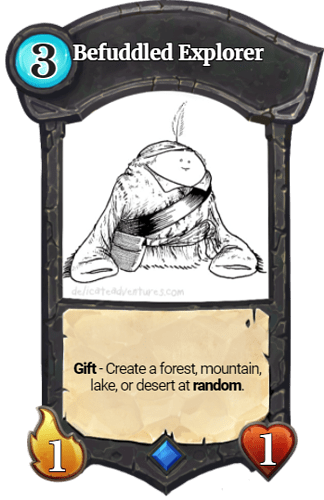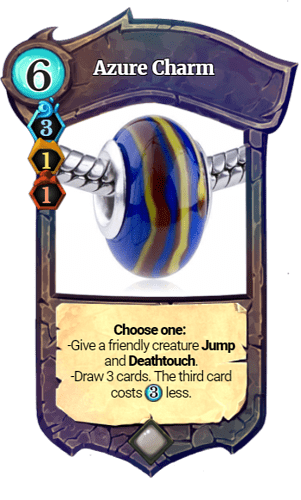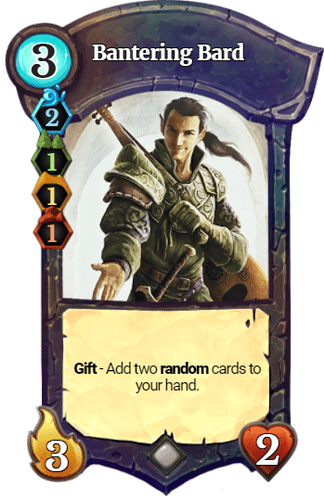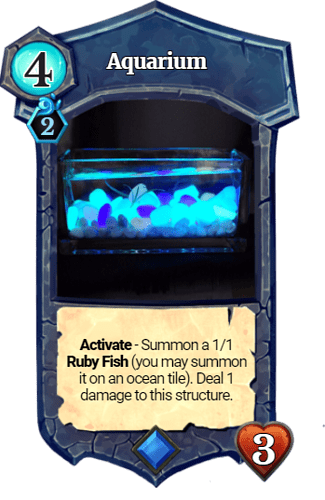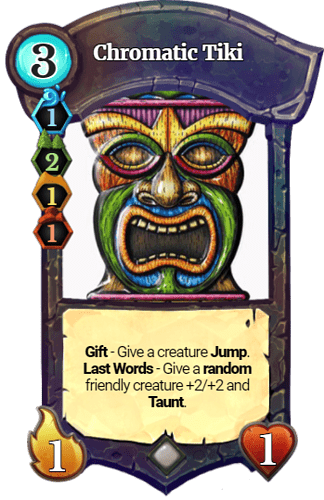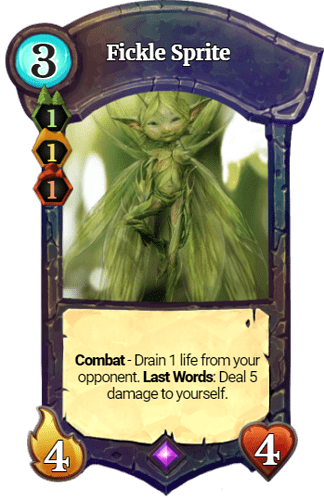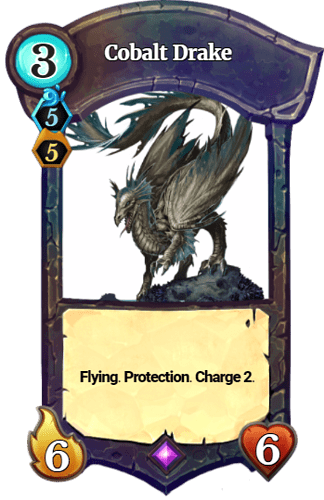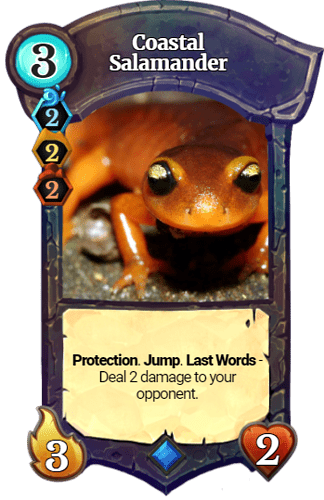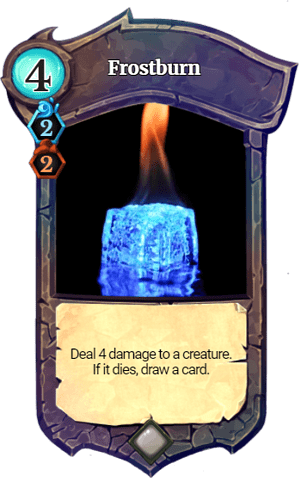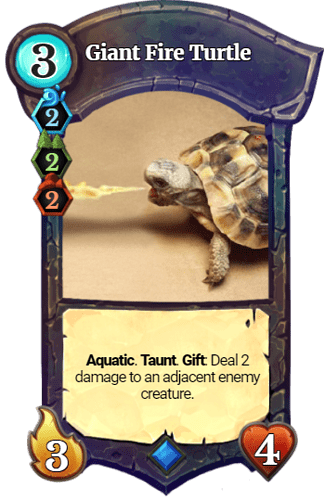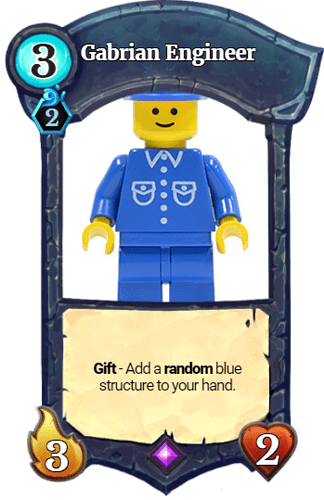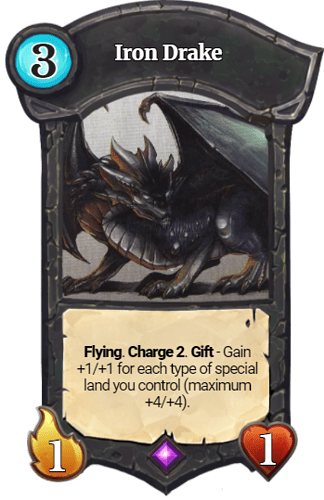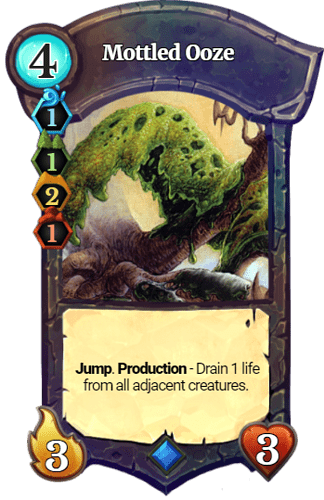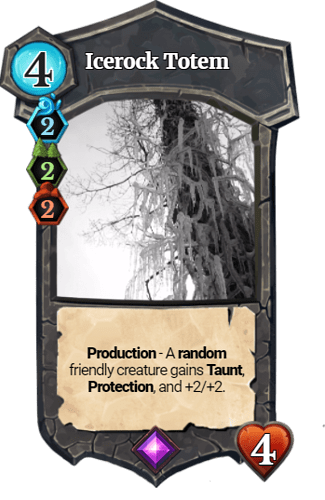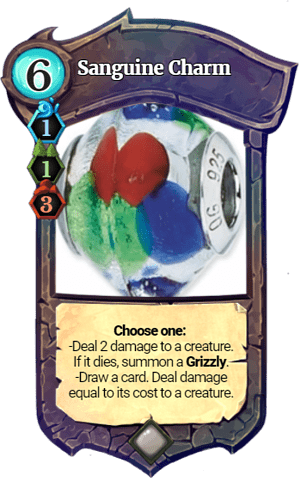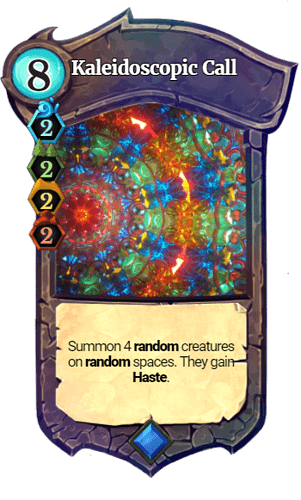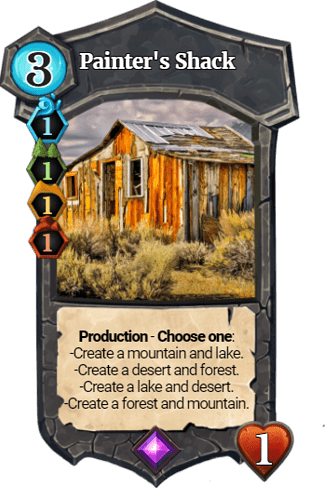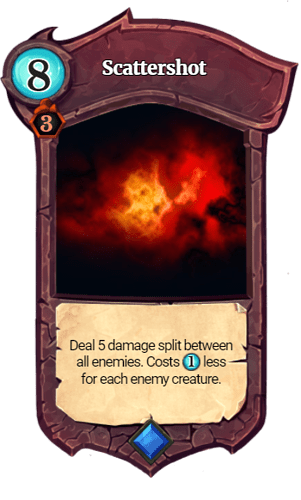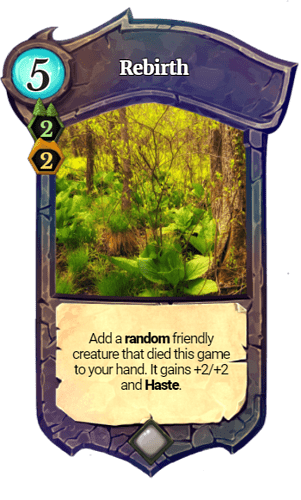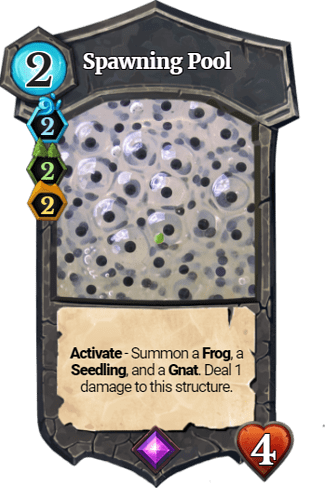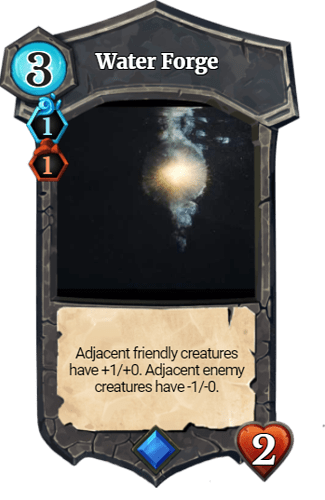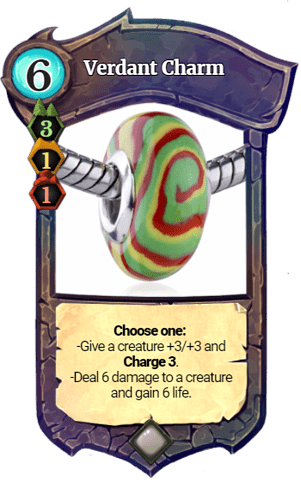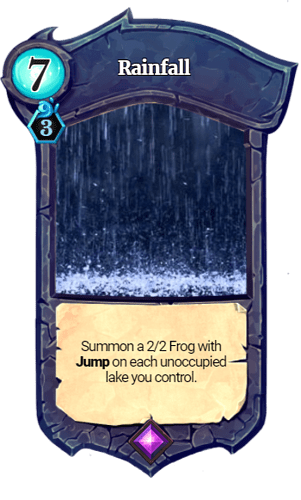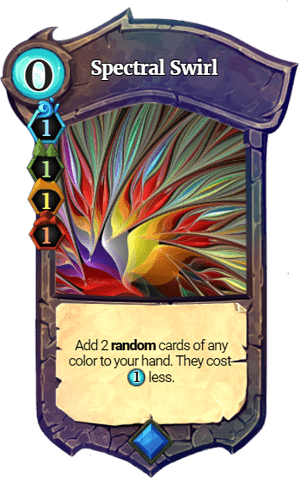Thanks for the feedback everyone. Of course many of these ideas are experimental and untweaked/balanced, but it may be worth mentioning why I think the randomness associated with these cards is actually productive for the game.
I know many come to Faeria looking to escape the game-dominating RNG found in Hearthstone. For Faeria card design, my focus emphasizes randomness within the confines of multi-colour decks. A specific detraction and yet a potential strength of making 2 or (especially) 3+ colour decks.
Consider the two central contenders in my list: Spectral Swirl and Bantering Bard.
The first is a multi-colour take on Spellwhirl from blue. The benefit of Spellwhirl (adds density to your deck as a placeholder for 2 blue cards) is balanced by the randomness. You can not tell if what you get from Spellwhirl will be immediately useful to you, but you design your deck to take advantage of what is known (immediate event synergy) and what is unknown (range of blue cards available). Spectral Swirl operates in a similar vein, but extended to the whole range of coloured cards. The extremity of the randomness is further balanced by the small reduction you gain.
Now, I think it is important to note that this kind of randomness is generally negative to the player of the multi-colour deck, rather than the opponent. The reason is that unlike in HS, the number of impactful cards is limited by the nature of Faeria’s board. In HS, you face RNG at all kinds of levels, from things like Arcane Missiles to Yogg-Saron. But these cards are insane because the dimension of the “board” in that game cannot absorb the randomness.
In Faeria, if you played the Bantering Bard on turn 3 or 4, it is very unlikely that the cards you gain will be able to address the state of the board immediately - the range of situations is too great. What it does do is give a long-term card advantage to those who build a multi-colour deck. It gives up short-term tempo and specific choices with the long-term use of cards. And frankly, Faeria needs this archetype going forward. Investment in multiple land types should translate into increased power over the course of the game.
Instead, multi-colour (especially anyone interested in 3 or more colours) generally hit the ceiling of “growth” creatures, like Crusader and Firebringer - creatures which are mediocre design because they give an undue advantage to linear strategies (like hit face - which is already the point of the game - or drop creatures with more attack than HP, which is already beneficial). The Colossi are a slightly better take on this kind of design (play events, play lands, engage in combat (weak), harvest in enemy territory). Increasingly complex strategies should have increasingly rewarding payoff in the long-term.
Put another way, tempo (i.e. board presence) should be something players can snowball, but not something insurmountable. Board wipes, likewise, should be far rarer in Faeria, because it is so much harder to maintain tempo and board dynamics. Multi-colour cards struggle in BOTH departments, and the opposite should be the case. By sacrificing early tempo (since you need lands), you should be rewarded with late game tempo control.
At the moment all the multi-colour cards are woefully outclassed by these linear strategies. Scourgeflame, Twinsoul, Warstorm, Icerock, Apex, and to a lesser degree, Soul Eater are poor choices. They show up it “gimmick” decks (recall old Aurora’s Creation + Apex or roulette RB Icerock), but rarely perform well.
Combining these two facts (need for late game strategies to be viable and the outclassed multi-colour choices), I think the true place to introduce late-game control elements that do not merely AVOID the board is in multi-colour. And any multi-colour card which seeks to add value to hand ought to have an element of randomness to it.
I don’t see randomness as being anywhere near the problem it is in HS, because the board is a powerful antidote to the large outliers. If you risk playing with multi-colour decks, you risk getting rushed down. In addition, while both games limit you to 30 cards, in HS you can only include 2 copies in constructed - thinning out potential answers and increasing the RNG. In Faeria you can have a deck made entirely of 10 cards. In addition, since you can choose to draw every turn (not so much in HS), the chance you draw one of those 10 is 1 in 5 every turn, or 20%. This baseline consistency ensures that any randomness that gets added to Faeria will always be checked, no matter how many cards you make. If they do not provide enough consistency (in synergy with the rest of the deck), they will not be played.
